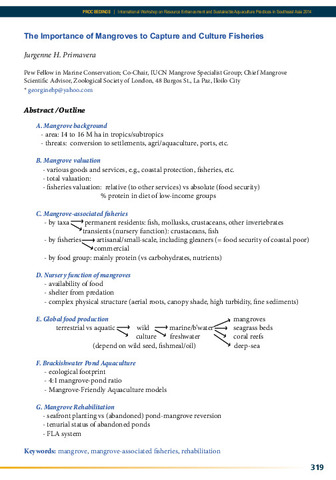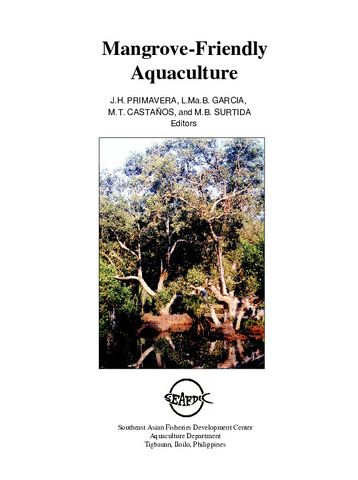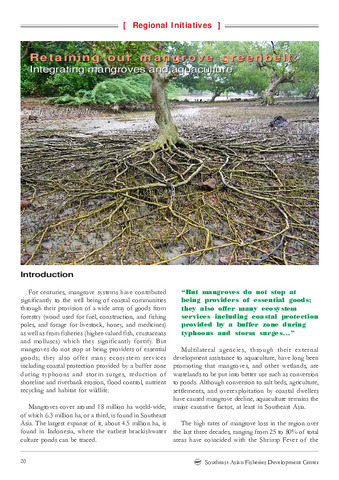The importance of mangroves to capture and culture fisheries
- Global styles
- MLA
- Vancouver
- Elsevier - Harvard
- APA
- Help
Share
Description
Abstract only.
Suggested Citation
Primavera, J. H. (2015). The importance of mangroves to capture and culture fisheries. In M. R. R. Romana-Eguia, F. D. Parado-Estepa, N. D. Salayo, & M. J. H. Lebata-Ramos (Eds.), Resource Enhancement and Sustainable Aquaculture Practices in Southeast Asia: Challenges in Responsible Production of Aquatic Species: Proceedings of the International Workshop on Resource Enhancement and Sustainable Aquaculture Practices in Southeast Asia 2014 (RESA) (p. 319). Tigbauan, Iloilo, Philippines: Aquaculture Department, Southeast Asian Fisheries Development Center.
Type
Conference paperISBN
9789719931041
Related items
Showing items related by title, author, creator and subject.
-
Mangroves as nurseries: Shrimp populations in mangrove and non-mangrove habitats
Primavera, J. H. (Elsevier, 1998)A total of 4845 penaeids belonging to nine species—Metapenaeus anchistus, M. ensis, M. moyebi, M. philippinensis, Penaeus merguiensis, P. monodon, P. semisulcatus, P. latisulcatus and Metapenaeopsis palmensis—were collected ... -
Mangrove-Friendly Aquaculture : Proceedings of the Workshop on Mangrove-Friendly Aquaculture organized by the SEAFDEC Aquaculture Department, January 11-15, 1999, Iloilo City, Philippines
Primavera, Jurgenne H.; Garcia, Luis Ma. B.; Castaños, Milagros T.; Surtida, Marilyn B. (Aquaculture Department, Southeast Asian Fisheries Development Center, 2000)The proceedings have three review papers on the mangroves of Southeast Asia, silvofisheries, and Indonesia's integrated mangrove forest and aquaculture systems. The rest of the papers, all on mangrove-friendly aquaculture ... -
Retaining our mangrove greenbelt: Integrating mangroves and aquaculture
Although multilateral agencies in Southeast Asia have long been promoting that mangroves, and other wetlands, are wastelands to be put into better use, such as conversion to ponds. However, there is a need for Mangrove ...







